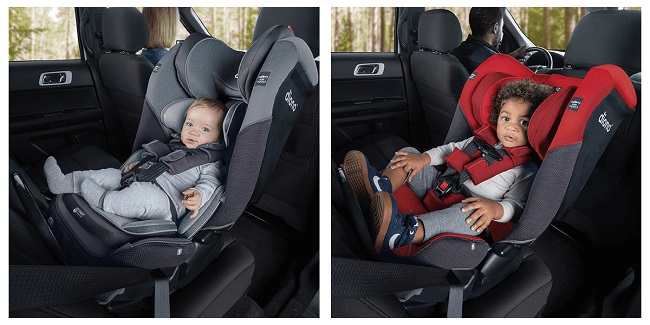Car seats are crucial for the protection of your child, therefore it’s necessary to know the latest recommendations for how to use them.
Using a convertible car seat for your newborn is an option, but the vast majority of parents go with an infant car seat. The widespread adoption of infant car seats is a primary reason for this. However, it’s important to note that any choice is secure if you follow the instructions for the car seat you use.

Let’s take a look at the many car seat options, how to properly utilise each one, and when it’s time to upgrade to a convertible seat.
Read Also:
- Angry Octopus Lashes Out at Man on Australia Beach
- Italian TV Beloved Entertainer Raffaella Carra Dies at 78
- Kansas Runs Past Villanova to get to the NCAA Final
Contents
Changing to a Convertible Car Seat
You may have thought it was unthinkable that Baby’s tiny frame would ever be able to fill out his baby seat. Even if you started off with one, you probably upgraded to a convertible car seat by the end of the first year.
While certain convertible seats can securely accommodate infants, many parents choose an infant seat instead because it is more portable. However, as time passes, Baby will outgrow his or her infant seat and it will appear much smaller and heavier to carry.
About a year into parenthood, most families find that they need to upgrade from the infant seat to a more permanent option. Fortunately, you may choose from a wide range of convertible car seats to choose one that works with your vehicle, your budget, and your child.
If Your Kid has Outgrown the Car Seat
If Baby has outgrown her current car seat due to her height or weight, it’s time to upgrade. Once your child nears the weight or height limits of most rear-facing-only infant seats (often between 22 and 40 pounds and 29 and 37 inches, respectively), it is time to start shopping for a new car seat. Check the instructions if you are unsure of any restrictions associated with your seat.
If there is less than an inch of room between Baby’s head and the top of the seat, it’s time to upgrade to a convertible seat. It’s important to have room here for good head and neck support.
Choosing the Right Convertible Seat
While the value of your child’s safety is incalculable, it’s vital to know that there is a convertible car seat for any budget, and that all seats on the market must meet federal safety standards. Because you don’t want to spend more money than you have to, it’s important to consider your budget before shopping for a seat.
- That’s because it’s tailor-made for your car: There are vehicles that are roomier, and others that already have car seats fitted for other children. You should check the car seat’s dimensions and fit with the existing seats to ensure a smooth installation.
- Find a seat with larger height and weight restrictions than others might have if Baby is growing bigger or quicker than many of his contemporaries; this will prevent you from having to buy a new seat in a couple of years.
- It’s an excellent fit for caregivers: Unless the seat is stationary, it’s crucial that the people responsible for Baby’s care have a thorough understanding of how to properly install the seat each and every time. This includes anyone who will be driving Baby around.
Read Also:
- Patrick Ewing Says He has Tested Positive for Coronavirus
- Did the World Trade Center have a 13th Floor
- Max Scherzer Leaves Early with Discomfort in Mets Win
Shifting to a Pylon
Even after Baby has outgrown the car seat, he will still be too small to use an adult seat belt. To maintain the seat belt securely over his body, he will still require the use of a booster seat.
There is no need to rush into using a booster seat because the National Highway Traffic Safety Administration suggests using a 5-point harness until youngsters outgrow it.
There is no need to worry about endangering Baby’s safety if he or she is approaching the weight or height limits of their seat and is developmentally ready to ride in a booster.
For passengers who fit the size and behaviour requirements for a booster seat, there is presently no data showing that a harness is safer than a properly placed booster seat.
